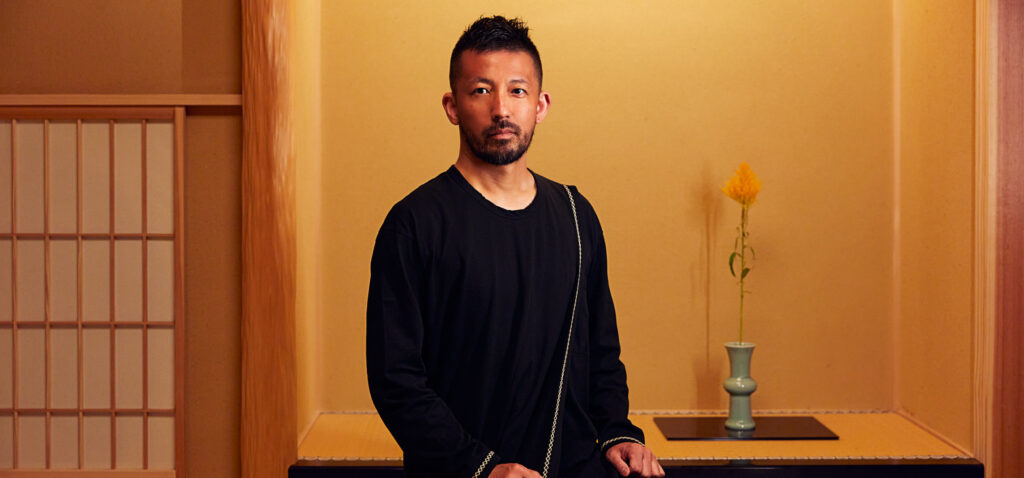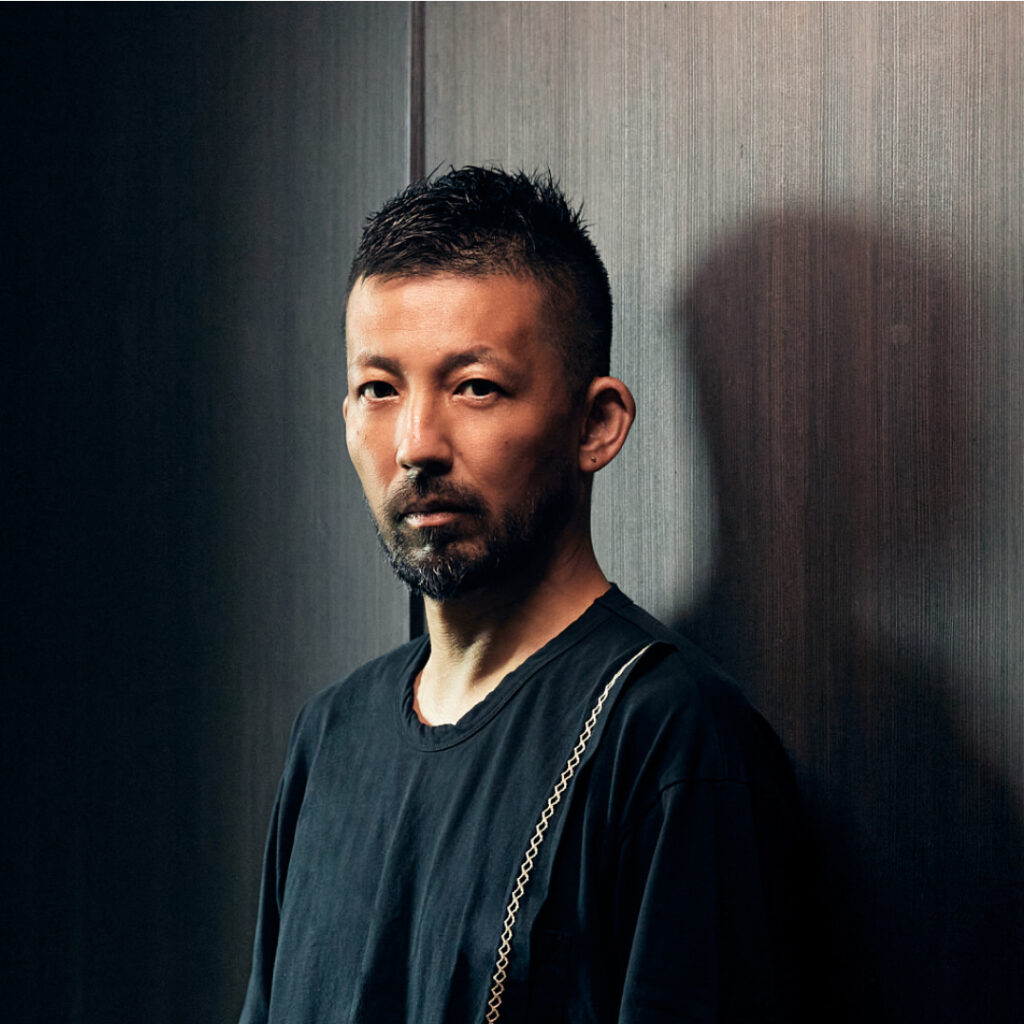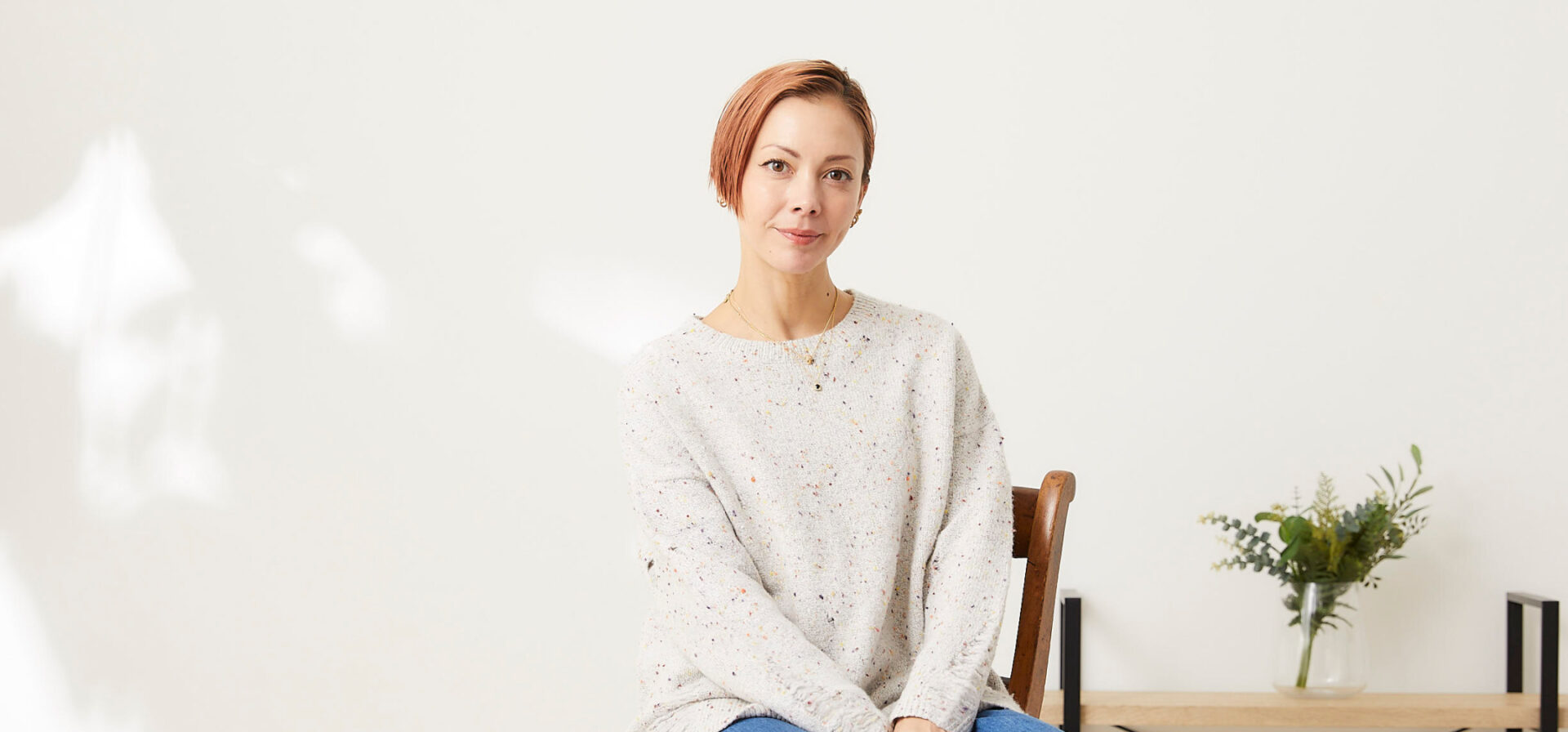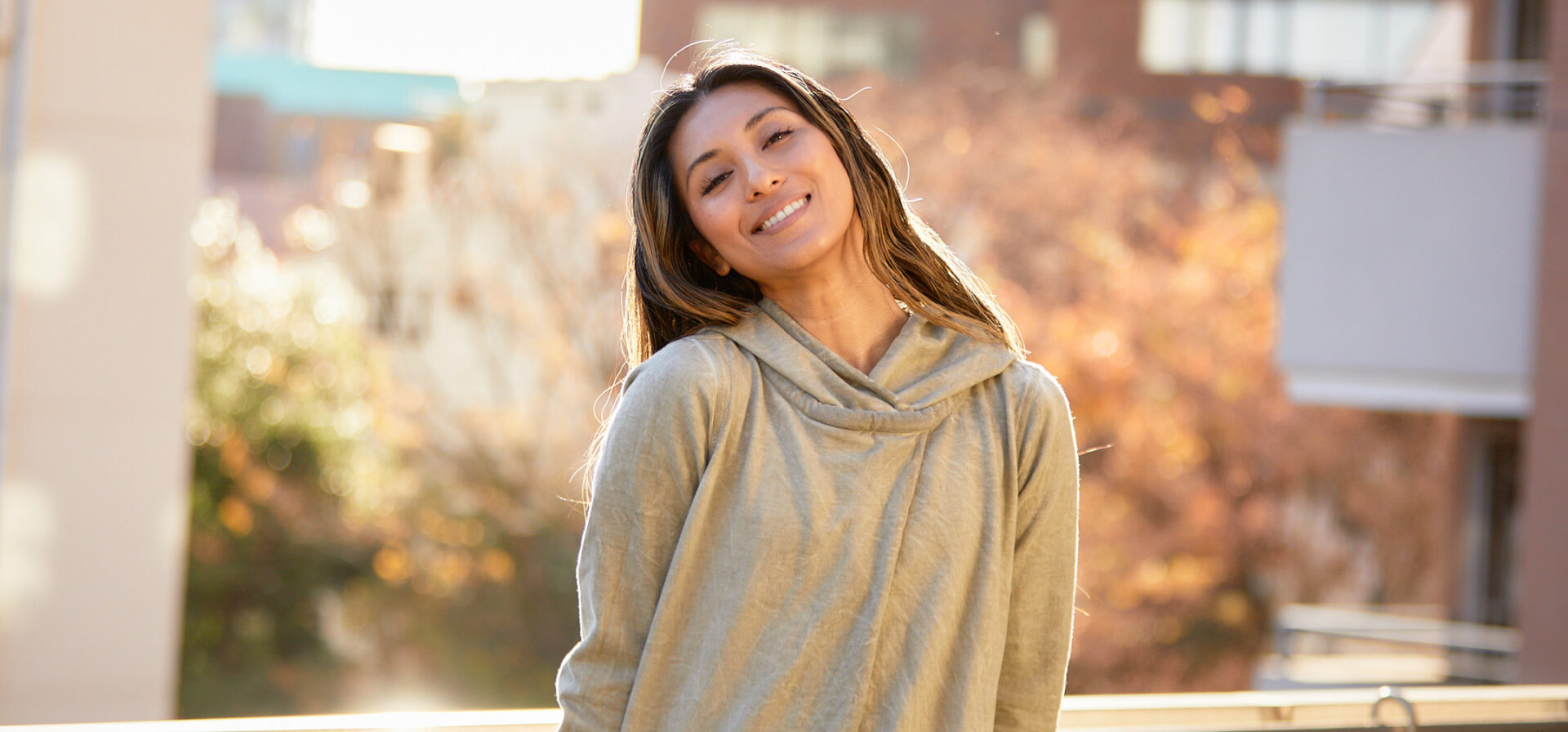Calligrapher Kisui Nakazawa: How a ‘One-in-100,000 Rare Disease’ Taught Me to Maintain Health by Listening to My Body
2024.01.16
How do professionals who continue to challenge themselves in various fields such as sports, business, art, and culture approach their bodies and unleash their potential? We ask about the "conditioning" they practice in their lifestyles.
This article features calligrapher Kisui Nakazawa. We will explore her unique approach to maintaining health, which she developed after battling a 'rare disease affecting 1 in 100,000 people' at a young age.
*Conditioning, as defined by TENTIAL, is the act of optimizing all factors related to one's physical condition to improve life performance.
About Conditioning
── Ms. Nakazawa, how conscious are you of conditioning within your lifestyle?
While I do not engage in muscle training, my approach is to consistently maintain a condition that allows for peak performance, within a manageable scope in my daily life. Through various trials and errors, I established my own routine, and I have been in excellent condition ever since.
── What constitutes 'peak performance' in calligraphy?
Above all, it is about being 'natural.' This means creating a state where emotional fluctuations and irregularities in breathing are flattened to an unconscious level. However, this is not something that can be achieved instantly by simply deciding, 'Alright, I'll do it!' Therefore, it is essential to consistently maintain a natural state even in daily life. This allows me to approach calligraphy as an extension of my everyday routine. To achieve this, I pay close attention to all aspects of my life, including sleep, diet, and beverages.
What I Focus on after Experiencing a 'One-in-100,000 Rare Disease'
── What prompted you to become conscious of conditioning?
In my third year of junior high school, I contracted a rare disease said to affect 1 in 100,000 people. At its worst, my limbs were paralyzed, and my condition deteriorated to the point where I was almost unable to move. At that time, the doctor reportedly informed my parents, 'There will likely be lasting after-effects.' They were advised to prepare for a high probability of wheelchair dependence or brain damage. It was indeed a severe illness. Fortunately, perhaps due to my youth, I recovered quickly and was able to return to a healthy state. However, the rehabilitation was so challenging that I had to begin with 'walking practice.' That experience had a profound impact on me, making me more sensitive to my body than perhaps the average person.
Concurrently, it was during that time that I also decided to become a calligrapher. With both my parents being calligraphers, calligraphy became my primary passion upon recovering from the illness and entering high school, and I had already decided to pursue it in university. Consequently, I consistently considered my physical well-being and diet as crucial elements in my pursuit of 'ideal calligraphy.'

── Specifically, what measures do you take to maintain your conditioning?
First, I ensure I get 8 hours of sleep every day. Seven hours is insufficient, and nine hours, conversely, leaves me feeling groggy. This duration is optimal for me to function at full capacity during my waking hours. Consequently, I generally avoid scheduling external work in the mornings. For instance, if I go to bed at 2 AM due to work, I wake up at 10 AM. Even if I work until morning, I still ensure I get 8 hours of sleep from that point. Unless there are exceptional circumstances, I avoid situations where I sleep for only two or three hours and then wake up early to go out.
── Do you also pay attention to exercise and diet?
Firstly, I genuinely dislike exercise (laughs). So, I essentially do not engage in any specific regimen, but I do make an effort to walk long distances whenever possible. When time permits, I walk to my destination. When I lived in Tokyo, if a meeting was three stations away, I would leave home early enough to walk there and still arrive on time. It is less strenuous than running, after all. However, that is largely the extent of my physical activity. People often ask me, 'How often do you go to the gym?' or 'Do you practice any martial arts?' but I do not participate in any of those activities.

A collection of brushes favored by Ms. Nakazawa. She notes that large brushes become considerably heavy when soaked with ink.
However, calligraphy itself could be considered a form of 'exercise.' For instance, when writing exceptionally large characters at events, an unstable core would result in ungraceful movements and shaky characters. The practice of maintaining proper posture while writing firm characters also serves as a form of core training.
── I see.
Even when writing calligraphy at a desk for extended periods, it is challenging without maintaining proper posture and natural breathing. I believe the reason I can now continue writing for hours with correct posture is that my core has been strengthened over time. I will be 46 this year, yet my physique and weight have not changed at all since high school. While most of my peers at this age have developed a belly (laughs), I am often told, 'You haven't changed at all since then.' Although I do not specifically make an effort for this, I suspect that practicing calligraphy contributes to maintaining my physique.

Production Scene on Iriomote Island, Visited Two Days Before the Interview
── What about your diet?
Currently, my diet consists solely of enzyme-fermented brown rice, natto, miso soup, and nukazuke (fermented pickles). While I have experimented with various approaches, when I dine alone at home, this constitutes my single meal of the day. I eat heartily only at night until I am completely full. As this is truly all I consume, there is nothing else in my kitchen (laughs).
Conversely, when I dine out with others, I eat whatever I like, as much as I like. Incidentally, I dine out approximately two or three times a week. This cycle currently suits me perfectly; I experience no stress, and my physical condition is excellent. Moreover, precisely because I maintain this dietary routine, dining out has become incredibly enjoyable. While I am generally comfortable without alcohol, I appreciate social gatherings where it is present, so if a dinner extends to a second or third venue, I partake in drinks with everyone as usual.
Products Utilized for Conditioning
── Are there any specific tools or products you are particular about when implementing your conditioning routine?
I am quite indifferent to such tools. When walking, I simply wear comfortable sneakers, and I do not own any equipment for training specific body parts (laughs). Regarding bedding, I use a thin, hand-spun sheet, approximately the thickness of a towel blanket. It is very warm and I find it extremely useful. When I sleep, I aim to shut out all distractions (laughs), so earplugs are essential. Occasionally, I also use an eye mask. My primary goal is to focus entirely on sleep.

Ms. Nakazawa trying on an eye mask. She reportedly uses items daily to help her focus on sleep.
About TENTIAL
── For this occasion, we asked Ms. Nakazawa to try TENTIAL's 'BAKUNE Pajamas Gauze'.
Of course, I was aware of recovery wear. I had previously worn recovery T-shirts, but the material was not compatible with my skin. No matter how much I was told, 'It's warm when you wear this,' if my skin isn't comfortable, it simply doesn't work. However, the 'BAKUNE Pajamas Gauze' fabric is a four-layer gauze material, featuring a special gauze weave designed to expose cotton on both the front and back surfaces.
Upon trying it on, I was very impressed and now wear it daily. Previously, I wore 100% cotton pajamas, which were satisfactory, but the 'BAKUNE Pajamas Gauze' feels less like 'wearing clothes' and more like my body is gently enveloped in something warm. It is so light and incredibly soft to the touch that I barely feel the fabric against my skin. As I currently possess only one pair, I am considering purchasing two or three more, especially given laundry cycles. Additionally, I am interested in the 'MIGARU WORK WEAR' hoodie, as it appears suitable for everyday wear and felt simple and pleasant to the touch.
── To whom would you recommend TENTIAL's products?
Firstly, I intend to gift them to my parents. I want those closest to me to experience this comfort. If everyone can meet in good condition, it will undoubtedly create a positive chain reaction.

Kisui Nakazawa's Calligraphy: 'The Way'
── Finally, please share a message with our readers.
Currently, information is constantly flowing in, and it is easy to get swept away by it. However, information should be regarded merely as a reference. Fundamentally, it is best to listen to your internal organs regarding food and your skin regarding clothing. By making choices based on whether your internal organs and skin are content, I believe it becomes clear what suits you and what does not. This perspective can also evolve with age. If you cultivate the habit of consistently listening to your body, the answers will naturally emerge.

Kisui Nakazawa - Calligrapher
Calligrapher. Graduated from Daito Bunka University, Faculty of Letters, Department of Chinese Literature. Head of Kisuikai. Born to calligrapher parents, he began calligraphy and studied traditional calligraphy based on classical styles. He received the 9th Tejima Yukei Award in 2014 and was appointed Hamamatsu City Goodwill Ambassador 'Yaramaika Ambassador' in 2016. Currently, he has relocated his base from Tokyo to his hometown of Hamamatsu. While dedicated to creating his own works, he also engages in a wide range of calligraphy-related activities, including drama titles, calligraphy supervision, logo design, and calligraphy classes.
Contact Us
For inquiries or consultations regarding our products, services, or media, please contact us here.


![[Model Rena Takeshita] “Quitting my job was not an option.” How I balance modeling and childcare without pushing myself too hard](https://pre-corp.tential.jp/wp-content/uploads/2024/03/takeshita_fv2-1-1.jpg)

![[Professional Baseball Player Tsuyoshi Wada] Secrets to Maintaining Health for the Longest Active Record](https://pre-corp.tential.jp/wp-content/uploads/2024/02/231208_tential49607-2.jpg)

![[Former professional baseball player Hirokazu Ibata] “Sleep” creates good performance! Sleep environment creation that I was particular about since I was an active player](https://pre-corp.tential.jp/wp-content/uploads/2024/05/①_TYT7107_TOP.jpg)
![[Actress Umika Kawashima] Gut health, warming activities, and moderate exercise. “Consistency” in small things leads to results](https://pre-corp.tential.jp/wp-content/uploads/2024/08/OGP_本番_川島海荷_1200×630-3.jpg)
![[Actor Rosa Kato] Because the Whole Family is Busy, those Rare Meals We Share around the Table Mean the Most](https://pre-corp.tential.jp/wp-content/uploads/2025/03/FV加藤ローサ_本番4402-3.jpg)
![[Female Shogi Player Manao Kagawa] “Shogi is an Endless Marathon” – What You Can Do Now for Conditioning](https://pre-corp.tential.jp/wp-content/uploads/2025/03/OGP_香川愛生_本番_1200×630.jpg)
![[Free Announcer Reina Sumi] Struggling with Childcare for the First Time! “What I Need most Right Now is Sleep.”](https://pre-corp.tential.jp/wp-content/uploads/2024/12/FV鷲見玲奈あたり_064.jpg)
![[Para Alpine Skier Momoka Muraoka] Harsh winter competition. Daily routines that maintain performance even during exhausting tours](https://pre-corp.tential.jp/wp-content/uploads/2024/11/FV_村岡桃佳_本番_2160×1008.jpg)
![[Artist Yuta Okuda] Sleep is the most important thing! What are his unique conditioning techniques for maintaining performance?](https://pre-corp.tential.jp/wp-content/uploads/2024/10/FV_奥田雄太_本番_2160×1008-1.jpg)